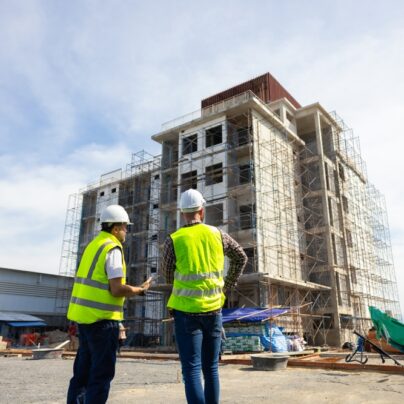 We get asked a whole heap of questions about personal protective equipment (PPE).
We get asked a whole heap of questions about personal protective equipment (PPE).
And it’s good to see the concern! Looking after your head, hands, feet and body is the bottom line of staying safe, healthy and happy on any work site.
You’re always welcome to pick up the phone and put a question to us, but we thought this list of the eight most common concerns might just save you the trouble;
1. Must Head Protection Always be Worn on a Construction Site?
In almost all cases the answer is yes – it’s the one thing not to go without, and has been demanded by UK law since 1992, whenever there is some risk of injury to the head, which is pretty much all construction sites. This would be anything falling or anything you could hit your head against.
However, on the off-chance there is not risk of head injuries at all on the site, hardhats aren’t required by law.
The first protection to workers’ heads is making sure the site itself is safe, with all possibility of falling things minimized. But there’s never a guarantee. So wear your hardhat!
2. What is ‘Suitable’ Head Protection?
To meet the legal requirements, your head protection has to be the right fit! It should be worn properly all the time, and be in good condition – don’t keep any damaged hardhats.
And watch out for dodgy, cheaper, knock off hardhats. They might save you money but they won’t save lives. Only get from a reputable supplier, such as JSP, Intersafety or Seton (I must point out there are others)
3. How do I Make Sure My Workers Wear Hardhats?
If you don’t set it as a rule, and one of your workers gets injured, you could be liable. So make it a site rule and check it’s being carried out.
A great thing to do is set an example – always wear a hardhat yourself on site!
4. Can Members of Some Religious Groups Legally Not Wear a Hardhat?
Sikhs who wear turbans are exempt from any requirement to wear safety helmets on construction sites. This is under the 1989 Employment Act, and it only applies to construction sites.
If a Sikh chooses not to wear a turban, then they must wear a safety helmet.
5. Can Workers Wear Shorts on a Construction Site?
There’s no law against it! But if you set a rule that full-length trousers must be worn, then it’s expected to be followed.
Shorts can pose a safety risk of sorts on sites, on some sites more than others. It’s an environment where grazes or small cuts can lead to infection – and full length clothing protects against this. When spraying anything or dealing with chemicals workers shouldn’t have skin exposed.
And then you have some specific trades who must keep skin covered up, like arc welders for example, who can be exposed to high levels of ultra-violet light, which can cause skin damage.
Then of course, there’s the basic common sense protection against cold and sun damage. Something everyone can have a little reminder about now and again.
6. Do Workers Have to Wear Protective Footwear on Site?
This one is a definite yes. The foot is very delicate and if unprotected is easily injured!
All construction workers must wear high quality protective footwear on site and while doing any heavy work. This means steel toecaps and midsole protection to protect against heavy falling objects and exposed nails.
As the employer, it’s your responsibility to give guidance on what workers should wear, and pay for it too. And as with all PPE, make sure footwear is ‘CE’ marked and meets all the requirements of the PPE Regulations 2002.
7. Are ‘Rigger Boots’ Ok?
Rigger boots are increasingly popular but not necessarily as safe as other protective footwear.
A cross between lace up boots and wellingtons, they are quick and easy to put on and take off, but some construction companies have seen higher rates of sprained ankles with rigger boot-wearers, perhaps because of the slightly looser fit.
There’s no law about it, but it’s generally considered reasonable to ban rigger boots on your site, because of these ankle-injury statistics.
8. When Must Workers Wear High Visibility Clothing?
As the employer, you decide when the workers should wear ‘high vis’ clothing; make it a rule and the workers must comply. But you have to provide the equipment.
Basically, always set a rule for high vis clothing where there are vehicles or moving machinery in operation – including the drivers (they have to leave the vehicle sometimes)!
And there you have it, the big eight personal protective equipment questions. Do you have any more?
Do ask, we’re always happy to chat! Leave your comments below or give us a call now.

A chartered (fellow) safety and risk management practitioner with 20+ years of experience. David provides a healthy dose of how-to articles, advice and guidance to make compliance easier for construction professionals, Architects and the built environment. Get social with David on Twitter and Linkedin.




One Comment
Dear Sir,
Really a Nice information,. Every Safety Officers should know about these things.